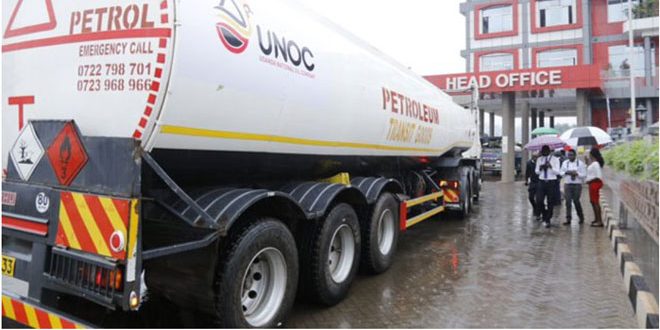A fuel tanker at the launch of bulk petroleum imports by UNOC in 2020. UNOC was to lead the importation of oil in the country to boost supply.
Uganda |NEWS ANALYSIS | The prices of fuel in Uganda, particularly in Kampala have continued to rise, but at a slower rate over the last two months, compared to the sharp increases registered between March and early July.
Ordinary motorists in Kampala had predicted that by the start of August, a litre of petrol could be selling at well over 7,000 Shillings based on the rate of daily increases then. Between June 20 and July 20, for example, the petrol of fuel had risen from 6,000 to 6,500 Shillings, but has since then risen by just about 50 Shillings.
Diesel prices have at some fuel stations slightly dropped back to between 6,000 and 6,150 Shillings a litre, a drop of about 100 Shillings. The common reason analysts are giving is the fall in crude oil prices over the last two months from a high 120 to 96 US Dollars a barrel in western Europe and 90 US Dollars in the US Crude market.
The fall in prices of crude is based more on speculation than demand and supply forces. It started mainly after concerns that the major global economies would slow down, and some, including the US, were likely to go into a recession, dampening the global economic mood.
Trouble for the US economy started over the continued uncertainty of the COVID-19 pandemic, which, as it was easing, was followed by the Russian invasion of Ukraine. The resultant sharp increase in fuel price increases led to sharp inflation across the world as prices for almost all basic commodities hit an all-time high.


